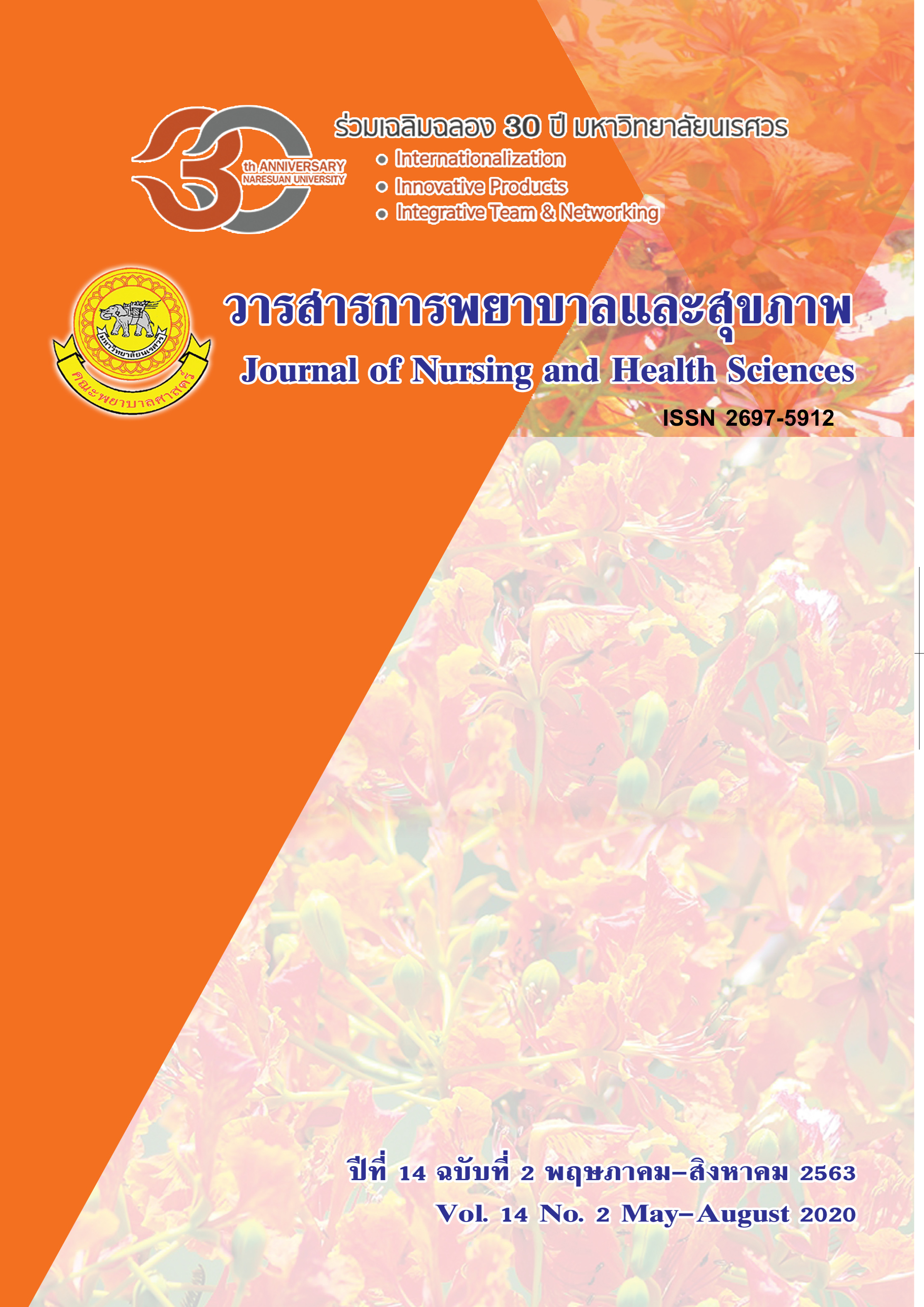Continuum of care in Pregnant Women from Placenta Previa In Antenatal care
Main Article Content
Abstract
Placenta previa is a critical obstetrical emergency encompasses antepartum hemorrhage and associated with the mother and the fetus. Placenta previa can increase preterm birth rate, perinatal mortality rate and maternal mortality rate. Furthermore, mental health problem also attributes to pregnant women and family. Pregnant women face with placenta previa, need more self-care and changing in life style than normal pregnant. Moreover, they are limited in activities and relationship with spouse and family. Midwives have an essential role in promoting safe motherhood and childbirth. The focus of holistic and self-care should be meeting the needs of the pregnant women. Midwives support continuum of care and focus on giving information, counseling and coordinate multidisciplinary team and ensure safety both pregnant women and fetus. This article aims to provide concept of continuum care of midwives in antenatal care and promote self-care of pregnant women to prevent complication from placenta previa.
Article Details
References
ABU-Rustum. R. S. (2019). Placenta previa: Practical approach to sonographic evaluation and management. Contempory OB/GYN, 64(11), 12-16.
Atsuko, S., Akihito, N., Ikuno, K., Masako, H., & Toshiyuki, T. (2013). Type and location of placenta previa affect preterm delivery risk related to antepartum hemorrhage. International Journal of Medical Science, 10(12), 1683- 1688.
Baosoung, S., & Srisawang, J. (2019). Nursing care of women with bleeding during pregnancy. In B. Supavititpatana & P. Prasitwattanaseree, (Ed.), Nursing and midwifery women with complications (pp. 1-45). Chiang Mai: Smart Coating And services. [In Thai].
Bhandari, S., Raja, E. A., Shetty, A., & Bhattacharya, S. (2014). Maternal and perinatal consequences of antepartum haemorrhage of unknown origin. BJOG : An International Journal of Obstetrics and Gynaecology, 121(1), 44–52. https://doi.org/10.1111/1471-0528.12464.
Buppasiri, P. (2015). Antepatum. In Y. Werawattakul, P. Buppasiri, S. Kaewrudee, C. Chongsomchai, & J. Sothornwit, (Ed.), OB-GYN for general physicians (pp.679-689). Khon Kaen: KKU Printing. [In Thai].
Cunningham, F.G., Leveno, K.J., Bloom, S. L., Dashe J. S., Hoffman. .B.L., Casey. B. M., …Spong. C.Y. (2018). Williams obstetrics (25th Ed.). New York: McGraw Hill.
Fan, D., Wu, S., Liu, L., Xia, Q., Wang, W., Guo, X., & Liu, Z. (2017). Prevalence of antepartum hemorrhage in women with placenta previa: A systematic review and meta-analysis. Scientific reports, 7, 40320. https://doi.org/10.1038/srep40320
Hall D. R. (2009). Abruptio placentae and disseminated intravascular coagulopathy. Seminars in perinatology, 33(3), 189–195. https://doi.org/10.1053/j.semperi.2009.02.005
Jing, L., Wei, G., Mengfan, S., & Yanyan, H. (2018). Effect of site of placentation on pregnancy outcomes in patients with placenta previa. PloS one, 13(7), e0200252. https://doi.org/10.1371/journal.pone.0200252
Kaewsiri, P., Hemadhulin, S., Ansook, P., & Naosrosorn, P. (2020). The empowerment of pregnant women to prevent the risk of preterm labor: Nurse’s roles. Srinagarind Medical Journal, 35(2), 238-245. [In Thai].
McCourt, C., Rance, S., Rayment, J., & Sandall, J. (2018). Organising safe and sustainable care in alongside midwifery units: Findings from an organisational ethnographic study. Midwifery, 65, 26–34. https://doi.org/10.1016/j.midw.2018.06.023
Department of Obstetrics and Gynecology. (2019). Statistic 2019. Chiang Mai: Department of Obstetrics and Gynecology, Faculty of Medicine, Chiang Mai University. [In Thai].
Department of Obstetrics and Gynecology. Faculty of Medicine. Chiang Mai University. (2018) . Antepartum Hemorrhage. Retrieved 1 May 2020 from https://w1.med.cmu.ac.th/obgyn/index.php?option=com_content&view=article&id=189:cpg-antepartum-hemorrhage&catid=41:clinical-practice-guidlines&Itemid=128. [In Thai].
Perriman, N., Davis, D. L., & Ferguson, S. (2018). What women value in the midwifery continuity of care model: A systematic review with meta-synthesis. Midwifery, 62, 220–229. https://doi.org/10.1016/j.midw.2018.04.011.
Phatihattakorn, C. (2017). Antepartum haemorrhage. In P. Wanitpongpan, K. Russameecharoen, & T. Lertbunnaphong, (Ed.), Modern texbook of obstetric (pp. 258-266). Bangkok: P.A. Living co., LTD. [In Thai].
Phoodaangau, B., Klankaradi, K., & Ketjirachot, R. (2016). Self-care experiences of women who have antepartum hemorrhage from placenta previa. The Journal of Faculty of Nursing Burapha University, 24(3), 22-32. [In Thai].
Phutong, P., & Wisanskoonwong, P. (2019). Continuity of care for prevention of preterm birth. Kuakarun Journal of nursing, 26(2), 156-168. [In Thai].
Ratanasiri, T. (2012). Antepatum . In T. Ratanasiri, T. Suntharasaj, & S. Suthotvoravut, (Ed.), Emergency obstetrics (2nd ed.) (pp. 51-74). Bangkok: Pimdee. [In Thai].
Ratinthorn, A. (2016). Continuity of care: the core of quality improvement in midwifery practice. Bangkok: Wattana press. [In Thai].


